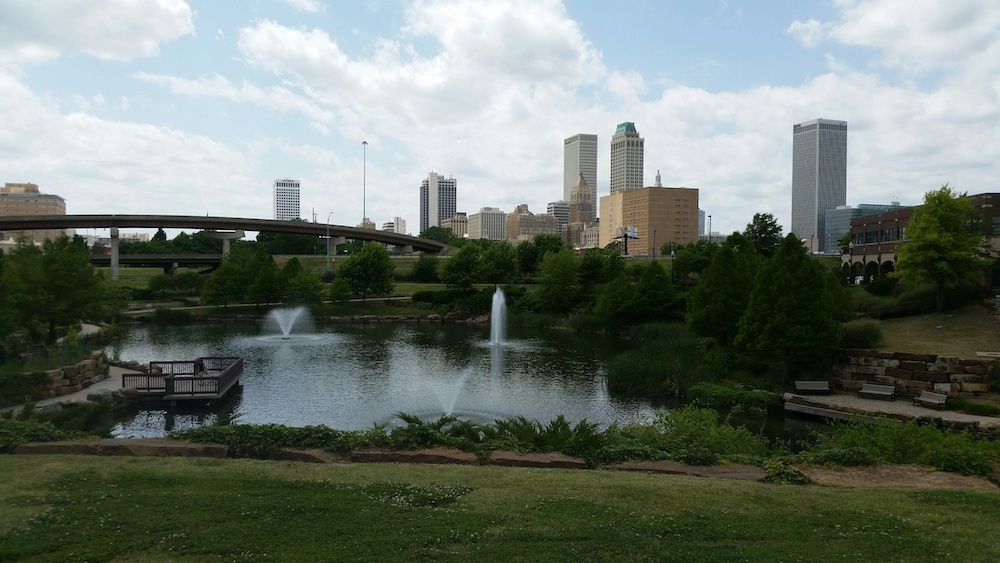If you’re interested in sharing your opinion on any cultural, political or personal topic, create an account here and check out our how-to post to learn more.
Opinions are the writer’s own and not those of Blavity's.
____
“With liberty and justice for all.”
Pledging allegiance to the American flag, after catching two buses from the South Ward to the East Ward of Newark, New Jersey, each school day, I was full of youthful hope and believed in the promise and possibility of this country. After elementary school, I was exposed to entrepreneurship on a national scale when Charles M. Cawley, founder and CEO of MBNA America — then the largest credit card issuer by volume in America — awarded me a scholarship to attend middle and high school at Saint Benedict’s Preparatory School. In these places, I felt like I was living in a foreign world — one in which students had parents who were small business owners and entrepreneurs, who were driven to and from school each day, and were able to do things that were out of my reach, like vacation abroad or travel to Walt Disney World. And yet, I thrived.
At the close of my high school career at Saint Benedict’s, I learned about global tech entrepreneurship when I became an inaugural participant in the Bill and Melinda Gates Foundation Millennium Scholarship Program. The generosity and support inherent in the program opened new doors of opportunity for me as I went on to study at Princeton University.
Years later, with a career in business, law, policy and government, including work in the United States National Economic Council in the Obama White House, I would move West and immerse myself in all things Silicon Valley. While there, I worked in the field of impact investing and venture capital, contributing to efforts to make strategic investments in the tech industry a stronger force for societal good. While there, I saw and experienced firsthand the challenges facing Black tech entrepreneurs in the United States.
When I received the call to join the Tulsa community in its vital work to rebuild Black Wall Street around technology, entrepreneurship, business and capital as Managing Director of Build in Tulsa, I knew I wanted to be part of this monumental moment and movement. The call from history, the attraction of a powerful and resilient community, and the hope of a brighter and more prosperous future for Black America pulled me to plant roots here.
As much as I thought that I could bring to Tulsa, Tulsa has given me so much more, like: insights and inspiration from visionary entrepreneurs and movement builders like Tyrance Billingsley II and Trey Thaxton; guidance from community leaders like Councilwoman Vanessa Hall-Harper, Dr. Tiffany Crutcher, Rose Washington, Sherry Gamble Smith, Rev. Ray Owens, Greg Robinson and Brandon Oldham; and knowledge from historians like Hannibal Johnson. Through them, I’ve learned not just about the resilience, strength and promise of the North Tulsa community, but also about the community’s storied, yet often untold, history. I discovered entrepreneurs like Kansas native J.B. Stratford and Arkansas native O.W. Gurley, whose visionary leadership would make Tulsa’s Greenwood Business District, also known as Black Wall Street, the largest and most prosperous Black entrepreneurship and business center in the United States.
With the foundation of Tulsa’s powerful history, guidance from the community, and an understanding of America’s current challenges and opportunities, I am inspired by the task ahead which includes contributing to the building of America’s leading Black entrepreneur-centric ecosystem. This ecosystem includes a National Business Advisory Board, with sector leaders and influencers like John W. Rogers of Ariel Investments (great-grandson of J.B. Stratford) and Loida Nicolas Lewis, widow of Black billionaire private equity financier and entrepreneur, Reginald F. Lewis; a multi-stage accelerator pipeline, inspired by research from data journalist, entrepreneur and tech influencer Sherrell Dorsey; and strategic partnerships with institutions like Princeton University, including its innovation department, entrepreneurship council and alumni community.
We are building with a large-scale and long-term perspective to develop the very infrastructure for racial and economic justice through Black multi-generational wealth creation in the United States. We are building with insights from technology leaders like LinkedIn founder and partner at Greylock Partners, Reid Hoffman, who noted in his book, Blitzscaling, that in order to meet the UN’s sustainability goal of creating 600 million new jobs by 2030, we will not just need to build new companies, but entirely new sectors. We are building with motivation from institutions like Citigroup that calculated that closing gaps in funding for Black entrepreneurs in America will add $5 trillion to the U.S. gross domestic product in the next five years alone.
What does all of this mean? With the centennial of the Tulsa Race Massacre here, the country finds itself in the most opportune moment in history to support Black entrepreneurs and make good on its promise to truly be the land of opportunity, liberty and justice for all.
Ultimately, I chose Build in Tulsa because of who I am, what Tulsa and Black Wall Street represent, and — together — what we can all be. As the country turns its eyes and thoughts to Tulsa, I am calling on all Americans to not only remember the history of Black Wall Street, but also to build the future of Tulsa (and America) with us.
To learn more, visit BuildInTulsa.com. To connect, please feel free to email me directly at [email protected].
____
Randolph F. Wiggins (“Randy”) serves as Venture Partner at Atento Capital and Managing Director of Build in Tulsa, the national and multi-sector effort to rebuild and revive Black Wall Street.
